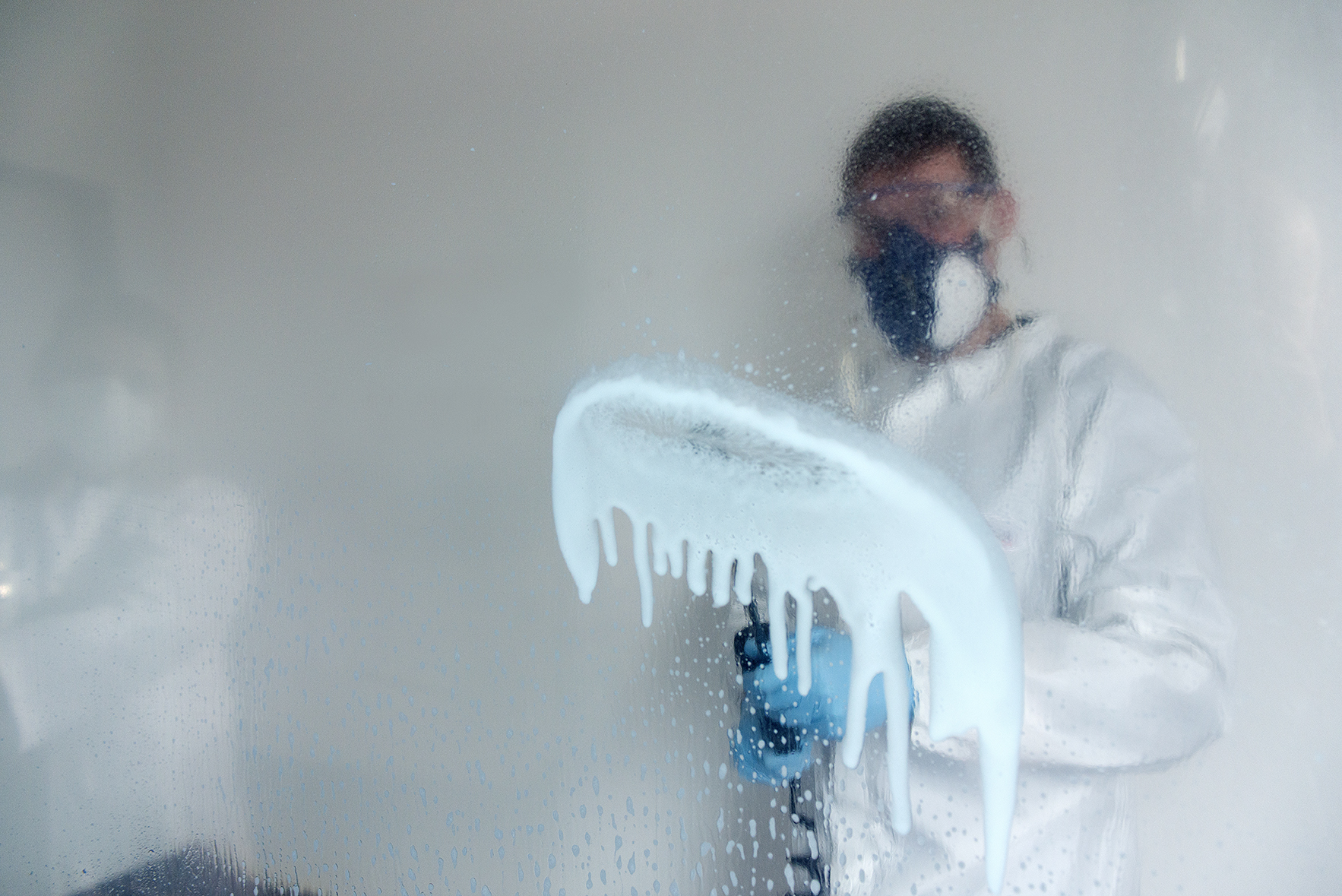
In recent years, application of biocides in the form of foam sprays has increased, for example, for large-surface disinfection in food processing areas or for biocidal pest control. Foaming is considered an alternative to droplet spraying, as it is assumed to result in a lower aerosol emission. While for droplet spraying large data sets on inhalation and dermal exposure are available and established exposure assessment models are available, this information was lacking for foam spraying.
Fraunhofer ITEM and the Institute of Occupational, Social and Environmental Medicine of the University of Erlangen-Nuremberg collaborated in a project commissioned by the Federal Institute for Occupational Safety and Health (BAuA), aimed at generating a detailed data set on inhalation and dermal exposure during biocidal foaming activities. Using a methodology recently developed at Fraunhofer ITEM, the scientists determined the aerosol release for common foaming technologies applied according to their intended use. These data allowed the identification of the relevant process parameters as well as a classification of the foaming processes into different aerosol release categories with regard to practical application.
This provided the basis for the development of a modified two-box model to predict inhalation exposure during foam spray applications based on simple and well-known process and foam parameters, such as treated surface area, foaming method, and exposure duration. Comparison with measurements conducted at real workplaces has confirmed the high predictivity of the newly developed model. A second focus was on quantifying the exposure reduction during foam spraying compared with conventional droplet spraying processes, to assess whether foam spraying is an appropriate risk mitigation measure. In many cases, foam spraying results in lower aerosol release than droplet spraying under similar conditions; however, this cannot be generalized based on the data available to date. This is in contrast to the results for dermal exposure, where no difference between foaming and spraying was observed, because dermal exposure is dominated by direct contact and splashes rather than by aerosol deposition.
The theoretical and practical knowledge gained within this project on the inhalation and dermal exposure of workers during the application of biocidal foams is intended to support industry and authorities in the assessment of risks to human health within regulatory procedures. Recently, the model has been considered in the project “Advancement and connection of modeling approaches for estimating inhalation exposure during spray applications”, commissioned by BAuA to Fraunhofer ITEM. This subproject is part of the larger BAuA project “Modular model approaches for occupational safety and health risk assessment in chemical safety.”
 Fraunhofer Institute for Toxicology and Experimental Medicine
Fraunhofer Institute for Toxicology and Experimental Medicine